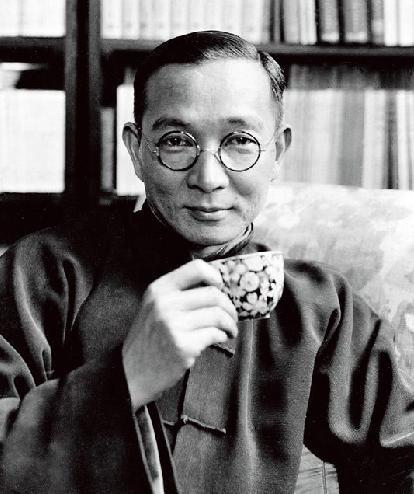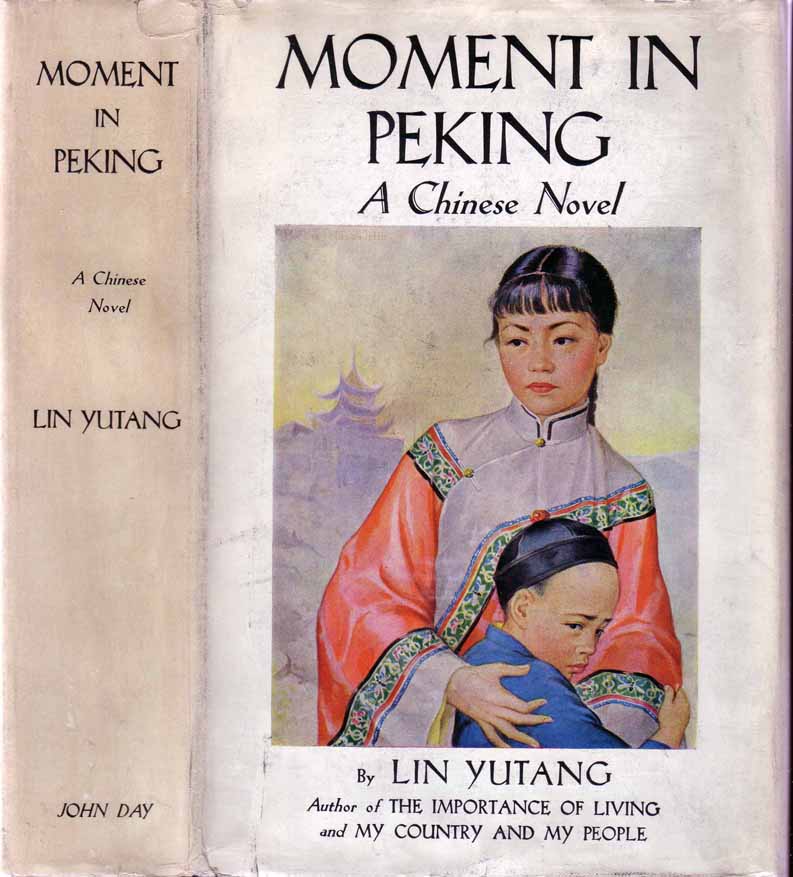-
1 Reading
-
2 Translation

A Although not so widely read today in the West, the works of Lin Yutang are still much loved in China. He is especially popular for the delightfully witty and insightful essays he wrote in the 1930s while he was living in Shanghai. However, it is his books that he published after moving to America in the 1930s that earned him an international reputation and established Lin as an important figure in bringing knowledge of China, and Asia more generally, to the West. The works he published at that time were books written in charming English dealing with Chinese topics in a way that made them appealing to non-Chinese audiences. It is this body of work that allows us to call Lin a cultural ambassador, someone who was able to bridge the gap between different peoples, mediating between different cultural communities to enhance mutual understanding and respect.
B Lin was born Lin Hele in a remote mountainous village called Banzai in Pinghe county, Fujian province in 1895. He took the name Lin Yutang while at school in Xiamen and then went to university in Shanghai at St. John’s University, a Christian establishment where classes were taught exclusively in English. As a result, Lin became fluent in English and became adept at writing in his second language. After graduating with distinction he became an English instructor at Tsinghua University, before pursuing postgraduate studies at Harvard University and then later Leipzig University, where he obtained a PhD in linguistics.

C On his return to China in 1923 Lin took up a post at Peking University and became active in Chinese literary circles. During this time he began to develop the idea of humour (you mo) in Chinese writing, which was then a new concept. After relocating to Shanghai in1927 Lin began editing and writing for a variety of literary magazines and journals. In particular he had his own column “The Little Critic” in The China Critic, an English-language weekly publication produced by Chinese intellectuals. These essays were written in English for the Western-educated Chinese elite as well as for foreigners living in China. They dealt, humorously, with topics ranging from the “terrible” city of Shanghai with its “dreadful” cosmopolitanism of wealthy, degenerate opium smokers, girl students and haughty, ungentlemanly foreigners, to discussions of Chinese “face,” freedom of speech and Mickey Mouse. These essays were subsequently collected and translated by Lin himself and published in Chinese, bringing Lin’s work to a wider local audience and establishing him as one of the most penetrating and funny writers on contemporary China.

D It was during this time that Lin became known on a world stage. He translated plays by George Bernard Shaw and met the great man when he came to Shanghai in 1933. He began a correspondence with the American writer Pearl Buck and travelled to Europe to give lectures on modern China. Lin also became associated with other prominent Chinese writers of the time, including LuXun. His first book written for a Western audience, My Country and My People, was published in the United States in 1935 and became an instant success. In this thought-provoking volume he discusses how China came to be in its current situation, presenting the Chinese mind, character and social system with such accuracy and clarity that even Chinese could gain an insight.
E The following year Lin and his family left China for America, where he would spend most of his time for the next thirty years. He quickly established himself in American intellectual circles and it was here that he wrote a series of works on which his reputation as the foremost Chinese philosopher of his time rests. The Importance of Living came out in 1937 and was the number one best-seller for non-fiction works for the whole of the following year. This book presented a delicious menu of essays on everyday topics as may be seen by its chapter headings such as: “On Having a Stomach,” “The Cult of the Idle Life,” “On Lying in Bed,” “On Sitting in Chairs,” “On Rocks and Trees,” and “The Art of Reading.” Parts of the book are highly appealing, funny, and stimulating while much of it focuses on differences between Chinese and Western thought and customs. The book is highly personal, and provides advice for a life well-lived, as the title suggests.
F This work was succeeded by The Wisdom of Confucius, and then The Wisdom of China and India in1942. These books blend Christian, Taoist and Buddhist world views and popularized Chinese literature and philosophy in the West. Three novels, Moment in Peking, A Leaf in the Storm, and The Vermilion Gate were well-received epic historical novels set in a time of upheaval in China. Many of these works remain in print today. They have been praised as “wise, humorous, and altogether charming.” Lin was seen as the greatest expert on China for a Western audience and this enabled him to act as a cultural ambassador between China and the West at a time of great turmoil in the world.
G In the mid-1940s Lin turned his energy to perfecting his Chinese typewriter. He had begun work on this as early as 1931 but his writing had taken precedence. Now he put the finishing touches to the typewriter which he called “Mingkwai” — clear and quick. His invention allowed the user to type up to 7,000 characters by selecting the right keys, and by using combinations, many more than that. He patented a so-called “magic eye,” a window that let the user select the right choice of character from a display when two keys are pressed and it is this innovation that is still used today in modern Chinese software programs. Lin called this his “legacy to the Chinese people.” He obtained a patent for the Mingkwai typewriter in the US in 1952 but it never went into production.
H In his later years Lin held a variety of public positions including director of arts and letters at UNESCO in Paris and a brief and unhappy stint as president of the new Nanyang University in Singapore. He continued to write novels and then, on returning to Asia for good in 1966, living in Taipei, he began work on his final great achievement, the compilation of his Chinese-English Dictionary of Modern Usage, published in 1972. This was the first Chinese dictionary published in the West to be produced by a Chinese scholar and it was welcomed by the New York Times as “a milestone in communication between the world’s largest linguistic groups.”
I Lin died in 1976 and was buried in the garden of his home in Yangmingshan in Taipei. This home is today a museum celebrating Lin’s life and work. Twice nominated for the Nobel Prize for Literature, Lin Yutang wrote thirty books in English and fourteen books in Chinese and his works include translations, biographies, plays, histories, and novels as well as his well-known essays. In his life and work he was an inspirational figure spanning East and West and he deserves to be rediscovered by people today wishing to understand and appreciate more fully the subtleties and complexities of the cultural relationships between China and the West.
(1203 words)


